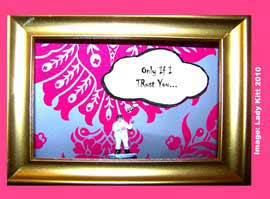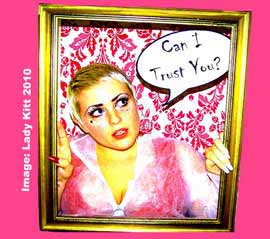Project 7
5th October - 5th November
Communic8 2 Co-oper8: The Cautious Optimist
An Art/Science collaboration by Lady Kitt and Dr John Lazarus
Kitt and John: A little background to the collaboration . . .
After many years of friendship and mutual curiosity about one another’s practices, the appearance of The Gallery of Wonder has prompted us to collaborate.
Kitt is a live artist whose interactive works focus on social engagement. John is an evolutionary biologist in the Centre for Behaviour and Evolution at Newcastle University.
We have used John’s research on cooperation as the starting point of our collaboration to explore how the visceral wonder of art can illuminate the more pragmatic wonders of science.
Our work is a combination of interactive performance, text and 3D miniatures. The performance functions simultaneously as an interactive art work and as a method of scientific data collection.
We hope you enjoy being part of this as much as we have.
Cooperation, Communication and Trust: The cautious optimist
John’s research asks how cooperation and trust evolved. Understanding our cooperative nature is of real importance in a world beset with global problems requiring cooperation for their solution. It’s pretty important for getting along with your neighbour too.
Signals of trustworthiness must have evolved in the human species, but there is a puzzle here. Since it is easy to lie about one’s intentions, and costly to be duped, why weren’t cooperative signals – such as a friendly tone of voice or a smile – ignored by our early ancestors? Such signals would then have vanished from the human repertoire during our evolution.
To tackle this puzzle, John developed a computer model that simulates the evolution of actions, signals and beliefs in a simple scenario that captures the essence of many social dilemmas. Early results predict the evolution of ‘cautious optimism’. Cautious optimists are cautious in that if they cannot judge the intentions of others they ‘defect’ rather than ‘cooperate’ and are therefore never taken for a sucker. When they can judge intentions they optimistically believe signals of cooperation but – perhaps surprisingly – are unwilling to believe signs that they are being duped. Since the best response to perceived cooperation is to cooperate too this means that cautious optimists always cooperate with each other and gain the benefits of collective action.
The Exhibition
We tell a story that exemplifies the social dilemma of our computer model. It is a tale of shopping, Christmas and friendship . . . Anne and Bob love a bargain, and it all starts with a radio ad . . .
“Pre-Christmas sales! Come to Grands for a King-size hamper and save £80! . . . Humbles’ sale of small hampers is in its last day - only two left - £10 off.”
Neither of them can afford the King-size alone, but both can afford the two hampers at Humbles. The exhibition explores the dilemma of trust these offers raise. Imagine you are Bob; what do you do? Go to Grands and make a great saving, but only if Anne agrees to go too and actually turns up? Or go to Humbles and be assured of a small hamper, or two if Anne doesn’t show? And what will you tell Anne you intend to do? At the preview the audience decided how they would act and what they would believe, and the outcome of their collective decisions was performed at the end of the evening.
How honest are we? How cooperative? How trusting? Only a hamper hinged on this dilemma. It could have been much more . . .
Biographies
Aged 3, Lady Kitt produced her first live art work when she (and friend Clair) invited neighbours to watch as they decorated one another with poster paint. As a child Kitt travelled Europe with (and was educated by) her parents, allowing her to focus on creative pursuits. During this time she spent four years training in the Indian performance discipline Bharata Natyam. More recently, whilst studying Fine Art at Northumbria University, she developed an interest in social engagement and performative research. These experiences and interests have all formed a basis for her current practice.
Insatiable curiosity and a desire to remove boundaries between art and viewer(s) have led Kitt to collaborate with practitioners in a variety of disciplines (from composers to beauty therapists) and make work for an interesting assortment of venues (including a Manor House in Brighton, a pig shed in Portugal, Fullerton University [California], and The Royal Opera House [Covent Garden]).
Kitt currently lives in Newcastle; performing and exhibiting nationally and internationally. For more info see Facebook: Lady Kitt, or http://www.ladykitt.co.uk/
John Lazarus is an evolutionary biologist and psychologist in the Centre for Behaviour and Evolution, Institute of Neuroscience, Newcastle University. He works on the evolution of social behaviour, specialising now in the evolution of cooperation. His website is www.ncl.ac.uk/ion/staff/profile/j.lazarus and he can be contacted at j.lazarus@ncl.ac.uk
Acknowledgments
We thank Rebecca Torrance for help in constructing our story, Daley Barber-Allen for being Bob and Irene Brown for giving us this opportunity. John thanks his collaborators on the modelling project: Peter Andras, Daniel Nettle, Gilbert Roberts and especially Jonathan Sayers, who ran the computer simulations. Kitt would like to thank Andy Ratford for his support and advice.

